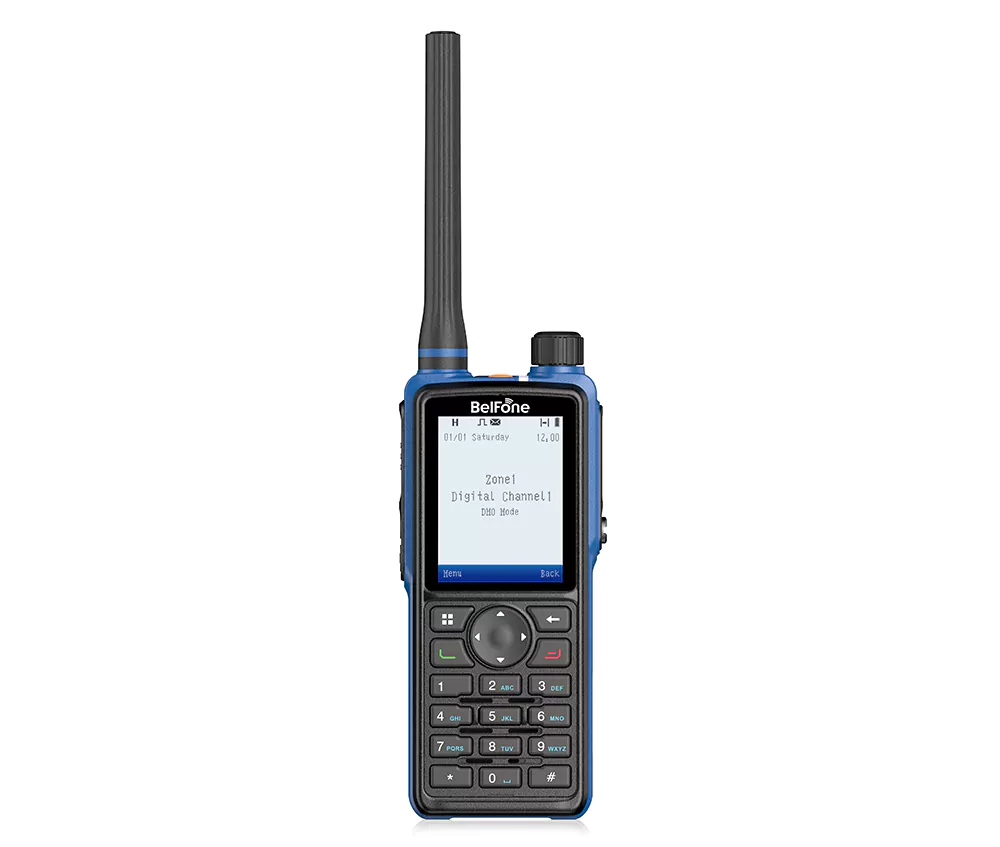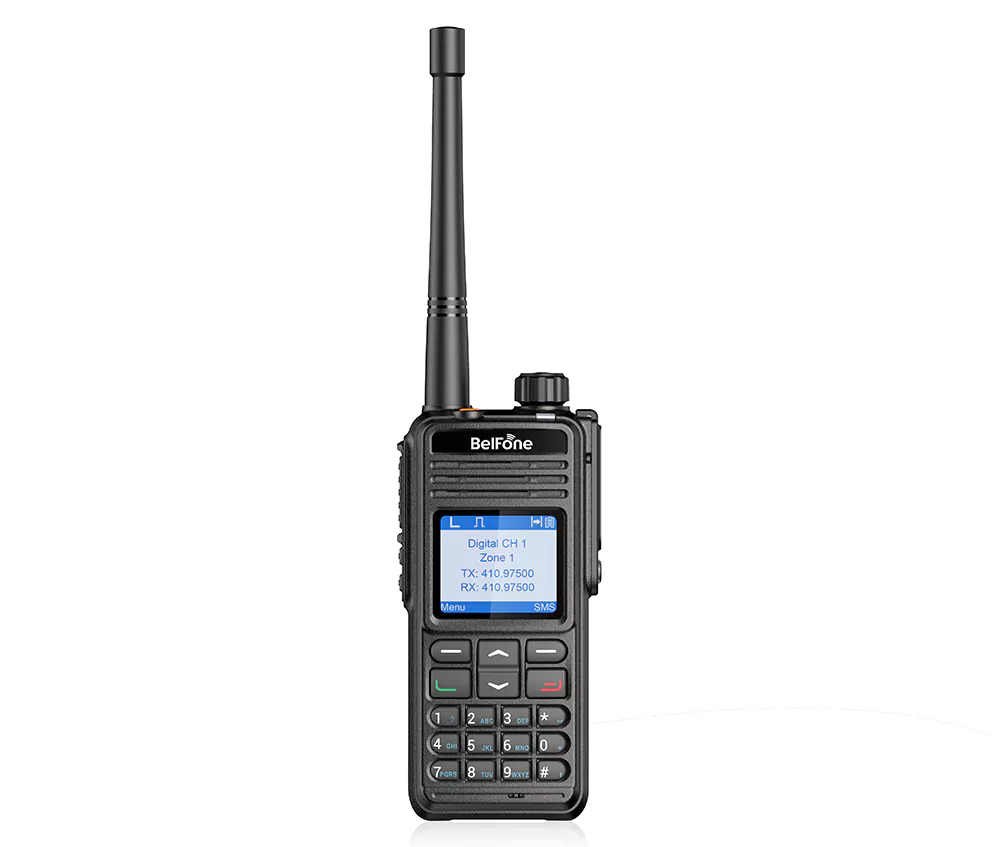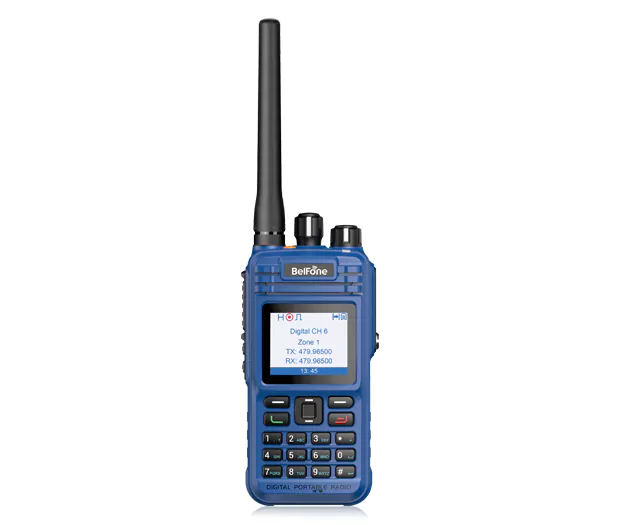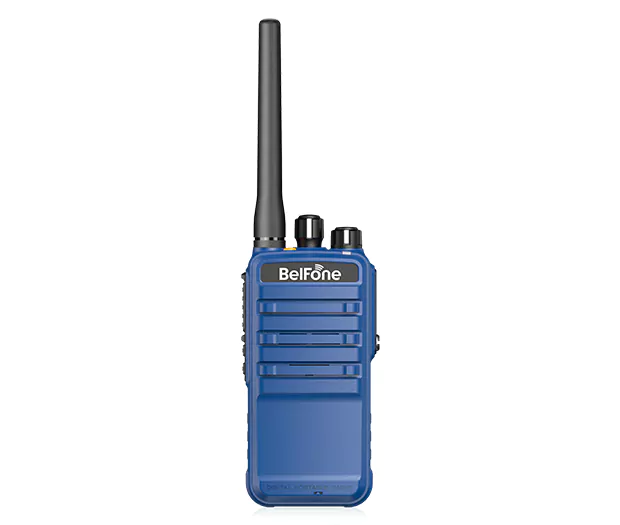How to Choose an Explosion-Proof Walkie Talkie
release date:2025-08-27
Selecting a suitable explosion-proof walkie talkie is critical for ensuring safe and reliable communication in hazardous environments (e.g., oil refineries, chemical plants, coal mines), where flammable gases, vapors, or dust may trigger explosions. Follow this structured guide to make a compliant and practical choice:
- Global/Regional Standards: Choose devices certify by authoritative bodies to match your location. Common standards include:
- ATEX (EU): Classified by “zone” (Zone 0/1/2 for gases; Zone 20/21/22 for dust) and “group” (e.g., IIA, IIB, IIC for gas volatility—IIIC is for highly explosive dust).
- IECEx (International): A global standard accepted in most countries, with classifications aligned with ATEX.
- UL/CSA (North America): Rated by “division” (Division 1/2 for gases; Division 1/2 for dust) and “group” (e.g., Group A-G for gases).
Ensure the certification exactly matches your environment’s hazard level (e.g., a Zone 1-certified device cannot be used in Zone 0, as Zone 0 has constant flammable risks).
- Intrinsically Safe vs. Explosion-Proof: Most walkie talkies use the intrinsically safe (Ex i) design, which limits electrical energy and surface temperature to prevent igniting flammable substances. Avoid “explosion-proof (Ex d)” models for portability—they are bulkier and better suited for fixed equipment.
- Frequency Band: Select a band based on your environment’s range and interference:
- UHF (300 MHz–3 GHz): Ideal for indoor/urban hazardous areas (e.g., chemical plant buildings), as it penetrates walls and structures well.
- VHF (30–300 MHz): Better for outdoor, open hazardous areas (e.g., oil fields), as it travels longer distances with less obstruction.
- Licensed vs. Unlicensed Bands: For industrial use, choose licensed bands (e.g., 400–470 MHz in China) to avoid interference—unlicensed bands (e.g., PMR446) have limited range and may be overcrowded.
- Battery Life: Opt for long-lasting batteries that support 8–12 hours of continuous use. In cold environments (e.g., outdoor refineries in winter), select cold-resistant batteries (rated for -20°C or lower) to prevent power loss.
- Signal Range: Estimate your communication distance (e.g., 1–3 km in indoor plants, 5–10 km in open fields) and choose a device with matching power (e.g., 2–5W transmit power). For larger areas, pick models compatible with repeaters to extend range.
- Ingress Protection (IP) Rating: Aim for at least IP67 (dust-tight and waterproof for 30 minutes at 1m depth) to resist dust, rain, or accidental splashes (critical for outdoor oil rigs or wet chemical plants). For extremely dusty areas (e.g., coal mines), choose IP68.
- Ruggedness: Look for devices tested to military standards (e.g., MIL-STD-810H) to endure drops (1.5m onto concrete), vibration (from machinery), and extreme temperatures (-30°C to 60°C).
- Antenna Design: Prefer integrated, rugged antennas over detachable ones—detachable antennas risk damage or creating sparks if disconnected in hazardous areas. If detachable is necessary, ensure it has explosion-proof certification too.
- Audio Clarity: In noisy environments (e.g., refineries with machinery), choose devices with noise-canceling microphones and high-volume speakers (110dB+), so communication remains clear without needing to raise voices.
- User-Friendly Design: Buttons should be large and easy to press with gloves (common in industrial settings), and the display should be backlit for low-light areas (e.g., underground mines). Avoid touchscreens—they are prone to damage and hard to use with gloves.
1. Prioritize Explosion-Proof Certification (Non-Negotiable)
The core of an explosion-proof walkie talkie lies in its certification, which guarantees it meets safety standards for hazardous areas. Focus on two key aspects:- Global/Regional Standards: Choose devices certify by authoritative bodies to match your location. Common standards include:
- ATEX (EU): Classified by “zone” (Zone 0/1/2 for gases; Zone 20/21/22 for dust) and “group” (e.g., IIA, IIB, IIC for gas volatility—IIIC is for highly explosive dust).
- IECEx (International): A global standard accepted in most countries, with classifications aligned with ATEX.
- UL/CSA (North America): Rated by “division” (Division 1/2 for gases; Division 1/2 for dust) and “group” (e.g., Group A-G for gases).
Ensure the certification exactly matches your environment’s hazard level (e.g., a Zone 1-certified device cannot be used in Zone 0, as Zone 0 has constant flammable risks).
- Intrinsically Safe vs. Explosion-Proof: Most walkie talkies use the intrinsically safe (Ex i) design, which limits electrical energy and surface temperature to prevent igniting flammable substances. Avoid “explosion-proof (Ex d)” models for portability—they are bulkier and better suited for fixed equipment.
2. Match Performance to Your Communication Needs
Beyond safety, the device must meet your practical communication requirements:- Frequency Band: Select a band based on your environment’s range and interference:
- UHF (300 MHz–3 GHz): Ideal for indoor/urban hazardous areas (e.g., chemical plant buildings), as it penetrates walls and structures well.
- VHF (30–300 MHz): Better for outdoor, open hazardous areas (e.g., oil fields), as it travels longer distances with less obstruction.
- Licensed vs. Unlicensed Bands: For industrial use, choose licensed bands (e.g., 400–470 MHz in China) to avoid interference—unlicensed bands (e.g., PMR446) have limited range and may be overcrowded.
- Battery Life: Opt for long-lasting batteries that support 8–12 hours of continuous use. In cold environments (e.g., outdoor refineries in winter), select cold-resistant batteries (rated for -20°C or lower) to prevent power loss.
- Signal Range: Estimate your communication distance (e.g., 1–3 km in indoor plants, 5–10 km in open fields) and choose a device with matching power (e.g., 2–5W transmit power). For larger areas, pick models compatible with repeaters to extend range.
3. Focus on Durability and Environmental Adaptability
Hazardous environments often have harsh conditions—ensure the walkie talkie can withstand them:- Ingress Protection (IP) Rating: Aim for at least IP67 (dust-tight and waterproof for 30 minutes at 1m depth) to resist dust, rain, or accidental splashes (critical for outdoor oil rigs or wet chemical plants). For extremely dusty areas (e.g., coal mines), choose IP68.
- Ruggedness: Look for devices tested to military standards (e.g., MIL-STD-810H) to endure drops (1.5m onto concrete), vibration (from machinery), and extreme temperatures (-30°C to 60°C).
- Antenna Design: Prefer integrated, rugged antennas over detachable ones—detachable antennas risk damage or creating sparks if disconnected in hazardous areas. If detachable is necessary, ensure it has explosion-proof certification too.
4. Verify Essential Features for Safety and Convenience
- Emergency Functions: Select models with a one-touch SOS button that triggers alerts (e.g., loud alarms, location sharing via GPS) to help locate personnel in emergencies. GPS/GLONASS positioning is also critical for large sites (e.g., mines).- Audio Clarity: In noisy environments (e.g., refineries with machinery), choose devices with noise-canceling microphones and high-volume speakers (110dB+), so communication remains clear without needing to raise voices.
- User-Friendly Design: Buttons should be large and easy to press with gloves (common in industrial settings), and the display should be backlit for low-light areas (e.g., underground mines). Avoid touchscreens—they are prone to damage and hard to use with gloves.
Technical support: Longcai Technology




















